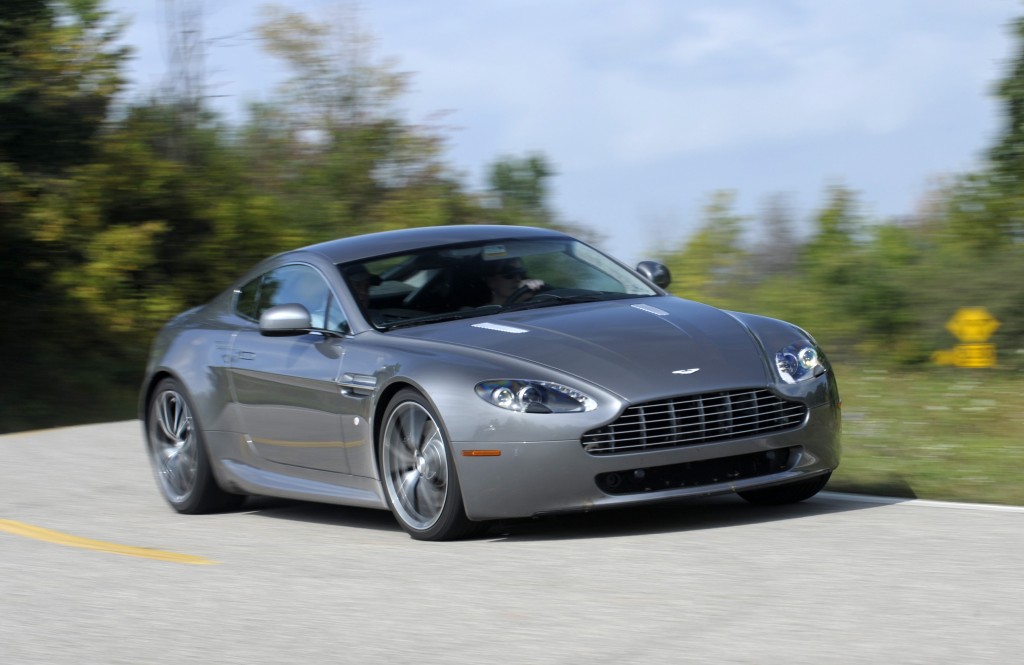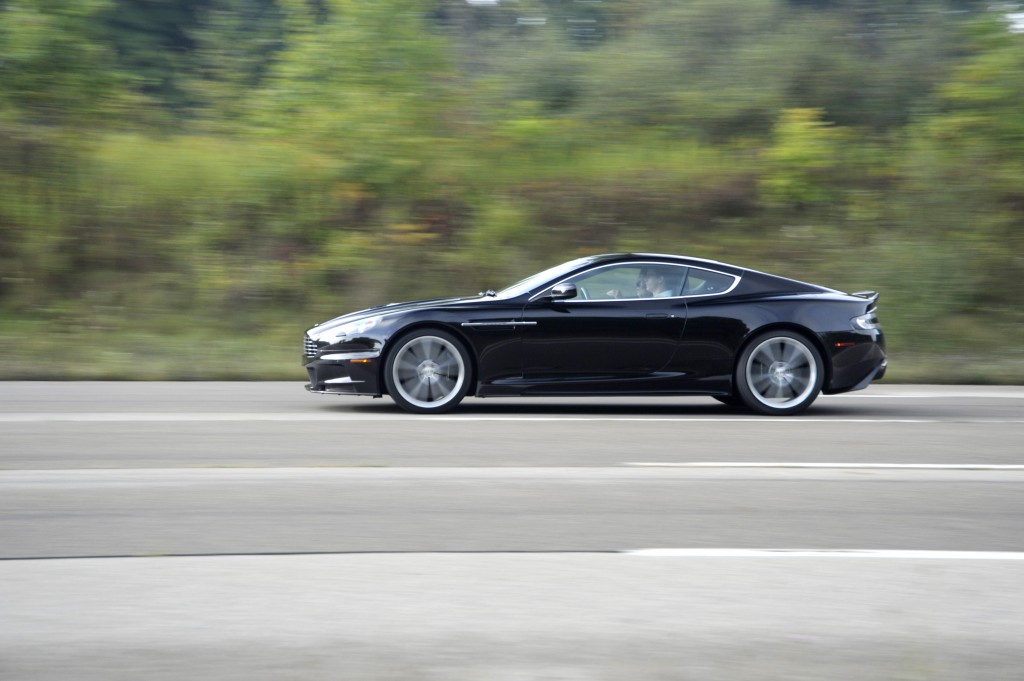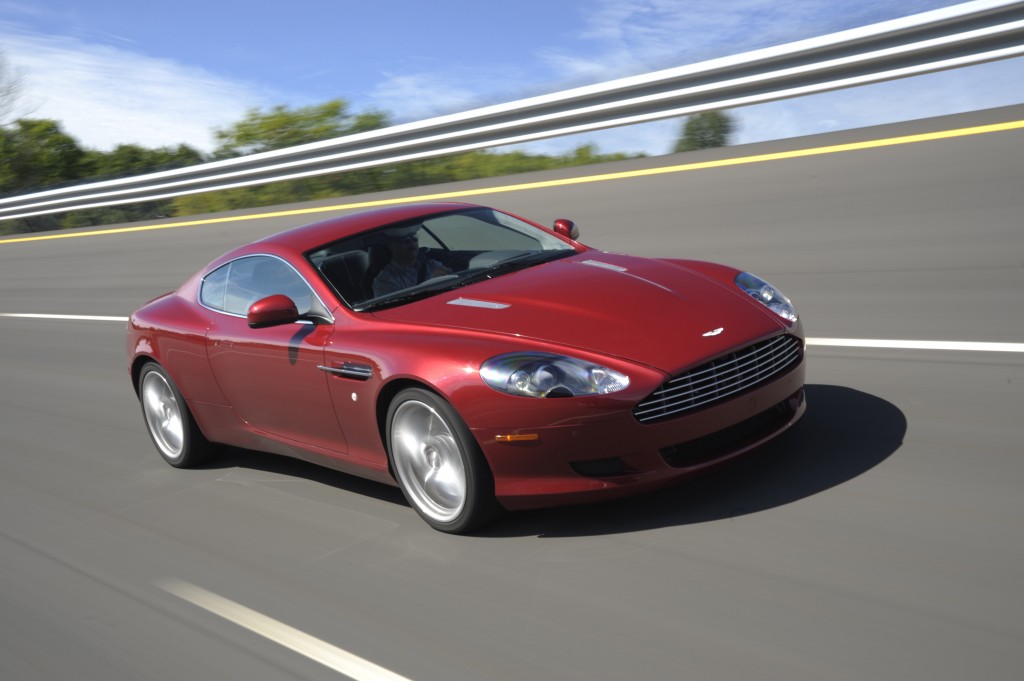Feature: Aston Martin Performance Driving Academy
Story by John LeBlanc/Photos by Aaron Kiley.
ROMEO, Michigan – Exclusivity is part and parcel when you enter the realm of Aston Martin. Even in its best sales year ever, 2007, the British automaker only rolled out about 7,000 hand-made sports and grand touring coupés. To put that in perspective, Porsche sells about 1.2 million cars and SUVs a year. Lexus touts the exclusivity of its LF-A supercar with “only” 500 samples being built. Yet Aston’s forthcoming 1-77 supercar will only be built to the tune of—you guessed it—77 examples. So it stands without reason that the new-to-North America Aston Martin Performance Driving Academy is equally exclusive. Don’t worry: you won’t be standing in line for seat time. The daylong driving school is limited to only three students, each paired with an instructor.
“We wanted to make sure the exclusive nature of our brand is extended into everything we do,” said Aston’s North American spokesperson, Francesca Smith, during a day where a small group of media were invited to participate in a condensed half-day version of the Academy’s full-day course.
As you may already know, all Astons are seriously high performing cars. And the automaker makes available three of its latest 2010 coupés to Academy students to experience. At the top, there’s the nearly-$300,000 DBS supercar, with its 510 hp and 420 lb.-ft. of torque reverberating from its 6.0-litre V12. You may also recognize it as actor Daniel Craig’s ride in the two most recent James Bond flicks. The other two models are the almost-$200,000 DB9 2+2 grand tourer (with “only” 470 hp and 443 lb.-ft. from the same twelve); and the “entry level” Vantage two-seater with its 420 hp and 346 lb-ft 4.7-litre V8.
As you can well imagine, an empty parking filled with parking cones just won’t due for such hallowed hardware. Thankfully all the locations where the Academy is run around the world—Ford proving grounds in England, Belgium, and here in North America at the automaker’s 16-square kilometre Michigan Proving Grounds just north of Detroit—are world class driving environments that offer the kind of variety normally available only to automotive development engineers. The Academy’s instructors are also world-class professionals.
All are members of Ford’s Vehicle Evaluation and Verification Division, with decades and millions of kilometres of test-driving experience between them.They also know the best way to ensure students get the most from their day is to slowly introduce them to the cars they’ll be driving. And the best way to do that is from the seat of the car, not in a classroom. So after a brief indoor session explaining the day’s itinerary and layout of the Ford Proving Grounds (with its over 160 km of roads), our first exercise in the cars is relatively simple: stop the car.
Braking is one of the functions most drivers never get the most out of their cars. With that in mind, we headed off to an over-4.0 kilometre straightaway. Beginning from one end, I was told to get the DB9 I was in up to 190 km/h, and then slam on the brakes as hard as possible. If done with enough vigour, I would produce about 1.3 gs of braking force. All three Astons I tried held up to the repeated stops with aplomb. The ceramic brakes-equipped DBS, though, was downright startling in it halting abilities.
Now that we had confidence in our Astons’ ability to stop in a straight line, it was time to head off and get a feel for how each felt changing directions. We would never reach the 190 km/h asked for in the previous braking exercise, but the Grounds’ Lommel Handling Course is setup to explore a car’s steering, handling, weight transfer and balance even at low speeds. On this short, narrow and twisty course (that included small and abrupt changes in elevation below speeds of 100 km/h) the differences between the three Astons were relatively dramatic.
As you can imagine, the shorter and lighter Vantage excelled in this low speed environment. A true rival to Porsche’s 911 Carrera S, the smallest Aston is also the brand’s most fun-to-drive car on a closed track. You can really toss it around, almost like a go-kart. Whereas the larger DB9 and DB9-based DBS felt like they needed more room to truly exploit their respective capabilities.
Onto the skid pad. In a circle, we were told to enter slowly, and then goose the throttle—the perfect technique to induce a slide. For this exercise, I exclusively spent my time in the DB9, starting with the stability controls shut down. Even only using a titch of throttle and full-lock counter steering, it was challenging to reign in all of the car’s torque rear emanating from its gorgeous haunches. Grin-inducing spins were the inevitable result. With the controls back on, I couldn’t spin the DB9 if I tried. Its system continually limited its power and kept it on course. Not so much fun, but way safer in a real-world, emergency situation.
Now with the experience of how the trio of Astons braked, turned and felt like at their respective handling limits (at least in relatively low speed settings) it was time to graduate to the Ground’s Hill Course. As per its name, this is a high-speed loop that winds its way up and down a large hill. There is plenty of elevation changes and blind, off-camber curves deliberately engineered to challenge the driver and the car.
After a couple of slow laps to become familiar with specific turn-in, braking and power-on points, the reigns were let loose and we were able to lap at speeds that were only limited by our talent. As you may have guessed, all three cars were a hoot. The course setup that brings to mind some of the European road courses like Spa in Belgium or Germany’s Nürburgring. But the DBS—with its combination of power and handling—was the quickest of this high performance trio.
To cap our day, we ventured onto the Proving Grounds’ legendary high-speed oval. This is the same 8.04 km high-banked track Ford tested its GT40 racecars that beat the Ferraris at LeMans in the 1960s. Normally, there’s a speed limit for production cars around the five-lane loop, but the Academy gets an exemption and we were able to experience all three cars near their top speed limits. After warming up with the Vantage and DB9, I jumped into the DBS. After a couple of laps to make sure the car’s tires were at the correct temperature, I was instructed, basically, to hammer it. Without much drama, we reached a top speed of 290 km/h. Aston’s top-line GT felt so composed, planted and quiet, it felt like half that speed.
So is the Aston martin Driving Academy for you? If you already have the means to own one of these high-performance sports or GT cars, I would highly recommend enrolling into the Academy. For $2,500 US, not only is it a day of driving fun, you’ll get a proper orientation on what your car can do without the constraints of public roads and with a the reassurance of one of the Academy’s experienced instructors riding shotgun.
Although most of the Academy’s clients have been existing Aston Martin owners to date, it’s not a prerequisite. If you are interested in one of the British brand’s cars and not sure which model best suits your needs, the Academy is a wonderful day of “test driving.”
For more information about the Driving Academy, contact one of the four Canadian Aston Martin dealers in Vancouver, Calgary, Montreal, and Toronto, or click here.









![[del.icio.us]](https://www.straight-six.com/wp-content/plugins/bookmarkify/delicious.png)
![[Digg]](https://www.straight-six.com/wp-content/plugins/bookmarkify/digg.png)
![[Facebook]](https://www.straight-six.com/wp-content/plugins/bookmarkify/facebook.png)
![[Google]](https://www.straight-six.com/wp-content/plugins/bookmarkify/google.png)
![[Reddit]](https://www.straight-six.com/wp-content/plugins/bookmarkify/reddit.png)
![[StumbleUpon]](https://www.straight-six.com/wp-content/plugins/bookmarkify/stumbleupon.png)
![[Twitter]](https://www.straight-six.com/wp-content/plugins/bookmarkify/twitter.png)
![[Email]](https://www.straight-six.com/wp-content/plugins/bookmarkify/email.png)